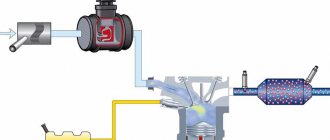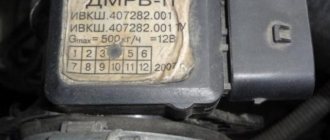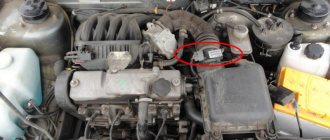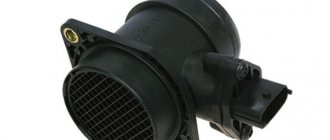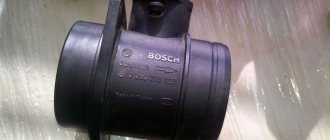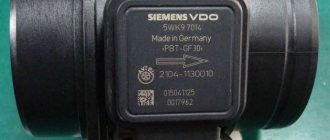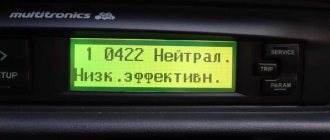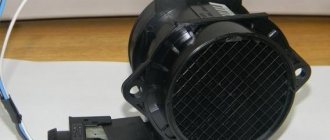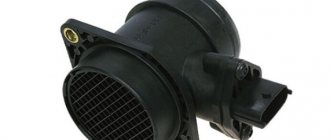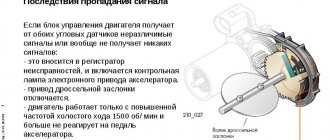What to do if your car has symptoms of a “dead” air flow sensor? Before going to a service station or store for a new expensive sensor, try checking it yourself.
The mass air flow sensor (MAF or MAF-sensor) controls the volume of incoming air into the intake system of the internal combustion engine to create a fuel-air combustible mixture. This allows you to get maximum engine power with minimal fuel consumption. The correct operation of all other interconnected engine systems depends on the readings of the mass air flow sensor.
The principle of operation of the mass air flow sensor
Most mass air flow sensors have two highly sensitive heating filaments (thermistors). The filaments are made of platinum or tungsten, and an electric current is applied to them to heat them to a certain temperature.
One sensor thread is located directly in the air line, and the second is protected by a special screen from direct air flow. When the engine is running, the air flow passing through the sensor cools the exposed filament more. As a result, a temperature difference arises between the thermistors, and an open thread requires more current to restore the required temperature.
Taking into account the cooling intensity of the thermistor and the difference in readings between the threads, the electronic control unit (ECU) calculates the amount of air entering the intake tract and determines the required amount of fuel for stable engine operation. Many mass air flow sensors additionally have a built-in air temperature sensor entering the intake tract, which allows you to take more accurate readings.
Some MAF sensors use either a sputtered ceramic heating element or a semiconductor film instead of highly sensitive filaments. But the principle of operation of the sensor remains the same.
Where is the MAF located?
The mass air flow sensor is located in the vehicle's intake tract, between the air filter and the throttle valve, and is mounted directly on the air filter housing.
Causes of problems
The air flow meter becomes unusable for the following reasons:
- a lot of dust and dirt gets on the measuring elements, because the car owner rarely changes the air filter;
- on heavily worn engines, gasoline and oil vapors penetrate into the mass air flow sensor through the crankcase ventilation pipe;
- a hole in the corrugated air duct from where dust is sucked in;
- accidental damage due to unqualified repairs;
- break in the wires connecting the sensor connector to the controller.
In addition to the above reasons, natural wear and tear of the device also occurs. The service life of a new mass air flow sensor is 50–250 thousand km, depending on the make and origin of the car.
Symptoms of a faulty air flow sensor
If the mass air flow sensor begins to produce incorrect data, then a failure occurs in the system for preparing the fuel-air mixture, and the proportions of fuel and air are disrupted. This results in the following symptoms of a malfunction:
- Unstable idle speed
- Violation of the smooth running of the car
- Difficulty or impossible to start the engine
- Noticeable deterioration in vehicle dynamics
- Increased fuel consumption
- The yellow "Check Engine" light on the instrument panel does not go out
Check engine light on the instrument panel
If the Check Engine light is constantly on on the instrument panel, the easiest way to check, if you have a diagnostic tool, is to read the error codes, which will allow you to pinpoint the problem. One of the most common DMRV errors is error p0100. Explanations of diagnostic codes can be found in the technical literature for a specific vehicle.
None of the above symptoms are a 100% guarantee that the mass air flow sensor has failed. Other vehicle systems may also be to blame. But all these symptoms together, or each one separately, give reason to check the flow meter for performance.
Measuring voltage in the sensor
When repairing the mass air flow sensor in a VAZ 2110 with your own hands, you need to check the device using a special diagnostic device. If this is not possible, use a regular voltmeter. The scale should allow you to measure voltage with an accuracy of 0.01 volts. Measurements are taken between the sensor input and ground. The input is indicated by a yellow wire, and ground is usually indicated by a green wire. The optimal value is a voltage in the range from 0.99 to 1.01 V. If the mark shows a value higher, it’s time to repair the mass air flow sensor. To clean the sensor, you must first remove the unit mount. The factory fasteners look rather tricky; it makes sense to replace them with standard ones and a regular screwdriver.
The solvent will be carburetor cleaner. This is also convenient because the tube of the aerosol can fits perfectly into the resistor channel. We clean the resistor in several passes. Important: do not use matches, toothpicks, sharp sticks, or elegant rollers. Even a jet of compressed air can cause harm. After assembly, check the voltage again. If it is in the desired range, then the repair was successful.
How to determine a faulty air flow sensor
The easiest way to check the functionality of the air flow sensor is to disconnect it from the system. As a rule, this method shows almost 100% whether the element is working or not.
First you need to start the car and warm up the engine a little by accelerating. After about 3 minutes, turn off the engine and remove the sensor terminal. We return to the salon and start the car again. If the speed increases noticeably, then the mass air flow sensor is faulty.
Also, having removed the sensor, you will notice a faster increase in speed when accelerating with the pedal than was the case with the sensor. If the mass air flow sensor is not replaced in time, the fuel mixture will be too rich, which will lead to oil dilution and engine overheating.
What does a faulty air flow sensor cause?
Operating an engine with an inoperative/faulty flow meter causes detonation of the fuel mixture in the combustion chamber. This affects the operation of the crank mechanism (crank mechanism) and destroys the piston surface, which can cause a “wedge” in the engine.
What indications should a working mass air flow sensor give?
The voltage of the analog-to-digital converter (ADC) of the flow meter when the engine is not running should be 0.996 V. Indicators of 1.016 and 1.025 V are acceptable, but if they reach more than 1.035 volts, it means that the sensing element of the mass air flow sensor is clogged.
It is important to know
To accurately determine the degree of deviation of the operating flow meter values from normal values, it is necessary to evaluate the engine operation at different speeds.
For example, for an injection 1.5-liter VAZ 2111 engine, if it is in good condition, at idle (860–920 rpm) the correct readings are 9.5–10 kg/hour, and at 2 thousand rpm - 19 –21 kg/hour. If the flow meter at 2 thousand rpm shows about 17–18 kg, then the car will drive stably. If the values are from 22 to 24 kg/hour, then the vehicle will move steadily, but the fuel consumption per 100 km will be approximately 10–11 liters. In addition, the car will have difficulty starting in cold weather due to fuel overflow when the engine warms up.
How to check the air flow sensor (3 ways to check)
In some cases, to check the mass air flow sensor, it must be removed from the car. Dismantling procedure:
- Loosen the clamp
- Remove the air pipe,
- Unscrew the screws securing the sensor to the air filter housing.
- Before disconnecting the electrical connector, you must remove the negative terminal from the battery. This must be done so that the electronic engine control unit does not generate an error and the check lamp does not light up.
Method number 1. Visual control
To do this, you need to remove the sensor and carefully inspect it for mechanical damage or foreign objects or debris. It is also worth visually assessing the integrity of the heating filament sensors or heating film.
Such problems can arise due to a leaky air filter housing, or due to a poor-quality air filter.
If visible damage is detected, the sensor must be replaced. And if there is debris or dirt in it, the air flow sensor can be cleaned with special products or a carburetor cleaner (alcohol-based spray). Mass air flow sensors are very fragile, so be careful not to clean them mechanically. The sensor cannot be repaired!
Method number 2. Power off
The easiest way to check the mass air flow sensor is to disconnect power from it. With the engine not running, disconnect the electrical connector on the mass air flow sensor. Then we start the engine.
In this situation, the engine control unit switches to backup mode and replaces the readings of the disabled sensor with those programmed by the manufacturer.
In this case, engine operation should normalize and idle speed should increase. For additional checking, you can drive a car with the MAF connector disconnected - 100-200 meters. If all symptoms of a malfunction of the mass air flow sensor have disappeared, then the sensor is transmitting incorrect data - it is considered inoperative and requires replacement.
When checking the mass air flow sensor in this way, after disconnecting the electrical connector from the sensor, the “Check” engine error lamp will light up on the instrument panel. After completing the check or replacing it, you will need to reset the error! To do this, you can disconnect the negative terminal of the battery for a few minutes (carefully, absolutely all settings will be lost). In some car models, the error can only be reset at a service center using a special scanner connected to the car’s diagnostic connector.
Method number 3. Checking with a multimeter
To check the air flow sensor with a multimeter, you need to know which parameters to measure and from which contacts of the electrical connector. They may differ for each car brand. The location of the sensor wires and terminals can be found in the vehicle's electrical diagram.
For example, on Bosch sensors that are installed on VAZ and GAZ cars, you can check the voltage (V) between the incoming signal and ground at the mass air flow sensor connector. To do this you need:
- Turn on the car ignition, but do not start the engine,
- Connect the red (+) probe of the multimeter to the yellow wire,
- The black (-) probe goes to the green wire of the connector.
- We set the mode switch on the multimeter to measure the minimum direct current.
The voltage at the contacts should be between 1.00-1.04 Volts . If the readings are higher, the sensor requires replacement.
Additionally, you can remove the sensor without disconnecting the electrical connector and apply a stream of air to the sensor from the air filter side. The voltage should increase to 1.3 Volts , in which case the air flow sensor is considered working.
Depending on the sensor design, it is still possible to measure the resistance on the resistors. Moreover, the measurement results at different air temperatures will be different. Accurate data on the optimal values of resistance readings, measurement temperatures and the location of contacts on the connector are usually indicated either in special technical literature or in the car repair instructions.
Instructions for replacing the mass flow sensor with your own hands
To perform the replacement, follow the instructions:
- First, turn off the ignition and open the hood of the car.
- De-energize the on-board network; to do this, disconnect the battery.
- Next, use a screwdriver to loosen the clamp securing the corrugation to the controller.
- The corrugation itself is dismantled.
- After this, you must disconnect the power plug of the regulator.
- Using a wrench (usually 10), you need to unscrew the screws that secure the device to the filter housing.
- The sensor is dismantled and replaced. The assembly procedure is carried out in reverse order.
If all else fails, buy a new air flow sensor
All testing methods showed the same result - “Sensor to be replaced.” The mass air flow sensor is quite expensive, and you should approach its purchase consciously.
Using the example of the same manufacturer Bosch for LADA and GAZ (article 0280218037) - according to the search results on the GisAuto portal as of September 18, 2022, 568 offers from different cities were found in Russia. The cost of this sensor varies from 2,490 rubles. up to 6,676 rub. Such a range in prices may depend on various reasons: availability, delivery time, purchase cost, etc.
You can select a mass air flow sensor for your car on the GisAuto portal - you can use the part number, make and model of your car, and also create a request using the VIN number of the car, and then the sellers themselves will send you their offers. All you have to do is choose the option that suits the price and time frame.
Basic faults
There is practically nothing to break in a film sensor, so they are considered “eternal”. The spiral of filament air flow sensors is less reliable, however, these electronic devices cannot be repaired in principle, with the exception of cleaning and replacement. The following symptoms will help determine the malfunction of this particular sensor:
- spontaneous decrease in engine power;
- decreased acceleration dynamics;
- engine not ;
- increase in fuel consumption unjustified by driving style;
- illuminated Check errors;
- change in XX speed in any direction, appearance of jerks;
- The car stalls when changing gears.
When diagnosing a low signal level, the following options are possible:
- the plug fell off;
- the power supply is broken;
- oxidation or loss of mass;
- signal wire break.
Rice. 10 Mechanical damage to the VU meter
Since the electrical device is not repairable, but has a simple design, diagnostics can be performed on your own according to the principle of increasing its complexity.
Fish in an amber coat
Fish in an amber coat turns out tasty, juicy and aromatic. Such a fish will decorate the holiday table. To cook fish in an amber coat you will need
700 g fish fillet 1 pc. carrots 300 g. cabbage 1 pc. onion Vegetable oil 1 tbsp. l. mayonnaise Salt, 100 g cheese pepper
Recipe for cooking fish in an amber coat
Dip pre-cut fish into portions in flour. Then fry for about a minute on each side over high heat. Grate the carrots on a coarse grater, finely chop the cabbage, chop the onion. Simmer the vegetables until tender, adding 1 tbsp. oil and adding water if necessary. After this, add 1 tbsp to the stewed vegetables. mayonnaise and simmer until the liquid evaporates. Place the fish in a baking dish and place the prepared vegetables on top. Sprinkle everything with pre-grated cheese and bake at about 200 degrees for 15 minutes. The fish is ready. Bon appetit! The New Year holidays are just around the corner and many people prefer to spend them abroad. Winter holidays in France are very popular; there are numerous resorts, including ski resorts.
eatbest.ru
Jaguar V12 engine
[media=https://www.youtube.com/watch?v=pPxpPYLW4kw]
It is generally believed that heat is the cause of problems in either engine. Especially when it comes to the V12 engine. These are exactly the problems that the Jaguar V12 engine had. The fact is that during the design of this engine, the company’s engineers miscalculated the fuel supply system, as well as the ignition system. Ultimately, the V-twin engine quickly overheated, which led to its premature wear. Many experts in those years called this engine a time bomb.
By the way, due to engine overheating, there were problems with electrical wiring in cars. The point is this: this same electrical wiring, located close to the engine, literally melted in the engine compartment, which led to constant problems with electricity. In particular, in the engine compartment, due to the enormous temperature, all the hoses and pipes cracked.
Cleaning the air flow meter
Since the manufacturers do not provide for repair of the mass air flow sensor, this electrical device is considered “consumable”. There is no consensus on the possibility of cleaning to restore performance, even among service station professionals. If the car owner nevertheless decides to clean the mass air flow sensor on his own, it is necessary to take into account the nuances of the technology:
- the cleaner should not contain acetone or ether;
- Cotton swabs and compressed air are prohibited;
- most often WD-40 or Air Senso Clean from CRC is used;
- After removing the device, the spray is applied to it evenly with a powerful jet, the dirt dissolves and flows off under its own weight.
Rice. 14 Cleaning the VU meter with spray
Installation of the mass air flow sensor in place is possible after drying the surfaces without using a hair dryer.

